Mushroom enthusiasts and foragers are often captivated by the diverse and mysterious world of fungi. Among…
Oyster Mushroom Identification Guide: 7 Types of Oyster Mushrooms & 3 Poisonous Look Alikes
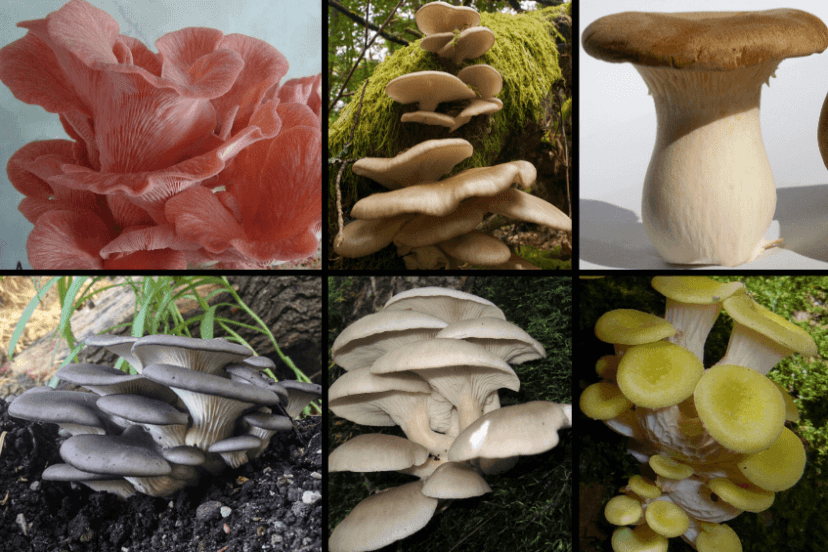
See the health benefits and how to identify the top 7 types of Oyster mushrooms and how to distinguish them from the 3 poisonous Oyster mushroom look alikes.
Whenever somebody hears the word mushroom there’s a good chance they will automatically think of Oyster mushrooms. I mean, why not? It’s one of the more popular types of mushrooms out there and they can easily be found in a farmer’s market or even groceries.
Couple this with the fact that Oyster mushrooms are easy to identify and can be found at any time of the year. This mushroom is a bit rare to find in the wild but once you know where they grow, you will realize they are quite abundant. Their main season for growing is from March through May.
This article we will discuss about the oyster mushroom, how to identify them, and we will also talk about the different types of Oyster mushrooms. By the end of the article, you will be confident enough to identify them and you should have a great idea on what they are.
Top 7 Types of Oyster Mushrooms
Now that we have already talked about the Oyster mushroom, where to find it, and how it looks let us now talk about the different types of Oyster mushrooms. While there are 202 species of the Pleurotus clade we will talk about the the main 6 types of Oyster mushrooms you can find in the wild (or grow on your own).
While all of them are edible but with different flavor profiles only 6 of them fall under the Pleurotus species. Let’s start!
 1. Pearl Oyster Mushrooms (Pleurotus Ostreatus)
1. Pearl Oyster Mushrooms (Pleurotus Ostreatus)
The poster child of the Oyster Mushroom family, these mushrooms are favorites by people in North America. They can be found abundantly in the woods of the USA. In terms of flavor, they have a milder and more tender flavor profile than a shiitake mushroom.
The taste is described as woodsy but slightly sweet. Add them in your egg dish and it will transform it entirely.
 2. Blue Oyster (Pleurotus Columbinus)
2. Blue Oyster (Pleurotus Columbinus)
The Blue Oyster get’s it’s name because when the mushrooms first start to bloom they have blue caps. However, when you find them full grown the blue color actually turns grey.
The caps are dark while the gills are pale. The distinct contrast between the cap and gill give it a regal appearance to some. Blue Oysters are favorite additions to Asian cuisines or stews because they don’t lose their shape in soup.
Another thing to note is that Blue Oysters are often used as meat replacements because of their chewy texture. As for taste, one will find it hard to distinguish the taste of a blue Oyster from a pearl Oyster.
 3. Golden Oyster Mushrooms Identification (Pleurotus Citrinopileatus)
3. Golden Oyster Mushrooms Identification (Pleurotus Citrinopileatus)
Mostly found in northern areas of Asia and cultivated in China, this fungi has been reported to be finding its place in North American woods. The golden Oyster mushroom comes in clusters of bright yellow cap with thin and delicate flesh.
It has a very distinct fragrance about it compared to its cousins. Golden Oysters can be eaten braised, in soups, or fried.
 4. Pink Oyster (Pleurotus Djamor)
4. Pink Oyster (Pleurotus Djamor)
With an appearance seemingly inspired by a flamenco dancer, the pink Oyster comes in vibrant pink with a ruffled look. Aptly named the flamingo Oyster, this fungi is native to the tropics as they like the warmer temperatures.
While the flavor profile is a bit similar to its cousins, it has a strong, woody smell and can be tougher than the others. If you were counting on its color to stick after cooking then you would be disappointed. Pink Oysters are often used as a substitute for seafood in chowder recipes.
 5. Phoenix Oyster (Pleurotus Pulmonarius)
5. Phoenix Oyster (Pleurotus Pulmonarius)
Compared to its other cousins, the phoenix Oyster mushroom looks very similar to the pearl Oyster. The only difference is that the caps are smaller and have paler coloration. It also grows a longer stem than a pearl Oyster.
As for taste they are pretty much the same although some prefer it over the pearl Oyster for its thicker flesh. It can be paired with just about any type of dish but it works best with just garlic and butter and a hot pan.
 6. King Oyster (Pleurotus eryngii)
6. King Oyster (Pleurotus eryngii)
Aptly named due to its sheer size compared to the other types of oyster mushrooms, the king oyster looks nothing like its cousins. Instead of growing in clusters king oysters grow individually. They develop thicker and meatier stems with tan-colored caps.
Also called King Trumpet Oyster mushrooms, they have a soft and crunchy texture when cooked with a savory umami flavor almost similar to that of abalone.
 7. Elm Oyster (Hypsizygus Ulmarius)
7. Elm Oyster (Hypsizygus Ulmarius)
The Elm oyster mushroom is actually not an oyster mushroom and has a misleading name. It is not actually a pleurotus species. The reason it is not considered a true oyster mushroom is because of the gills.
The gills of a true oyster will run all the way down the stem. A gill of the Elm oyster stop at the base of the stem.
This look-alike is not poisonous and can be eaten. But Elm oyster mushroom taste isn’t like a true oyster mushroom’s.
3 Poisonous Oyster Mushroom Look-alikes
 1. Jack-O-Lantern (Omphalotus Olearius)
1. Jack-O-Lantern (Omphalotus Olearius)
The Jack-O-Lantern is typically confused with the Chanterelles however to me it looks very similar to on Oyster mushroom so that’s why I added it to this list. It also has gills that run down the stem like an oyster does.
The easiest way to identify it is the bright orange color. Oyster mushrooms don’t turn orange.
This mushroom is not fatal if eaten however it is still poisonous. If eaten you will experience severe vomiting, cramps and diarrhea.
 2. Ivory Funnel Mushrooms (Clitocybe Dealbata)
2. Ivory Funnel Mushrooms (Clitocybe Dealbata)
This mushroom looks very similar to the Elm oyster but the difference is this one is poisonous. It also is different from the true Oyster mushroom in the gills stop at the base of the stem.
This mushroom is known as the sweating mushroom because if it eaten the poisonous symptoms are increase sweating followed by abdominal pain, nausea, diarrhea, blurred vision and labored breathing.
 3. Ghost Fungus (Omphalotus Nidiformis)
3. Ghost Fungus (Omphalotus Nidiformis)
This mushroom actually glows in the dark (it has bioluminescent properties)! How cool is that?
Well, you don’t want to eat it though because it is poisonous. It is not lethal however it will cause severe cramps and vomiting.
It does resemble the oyster mushroom as the gills to extend all the way down the stem. While it’s easy to tell the difference at night during the day light might be a little more difficult.
It typically only grow in Australia, Japan and India. So, if you don’t live there you shouldn’t have to worry about it.
What Are Oyster Mushrooms?
Oyster mushrooms is a type of edible mushroom. They are considered one of the most popular and widely consumed fungi all around the world. Their name derives from the shape of their cap that is similar to that of an oyster.
Oyster mushrooms are classified as a wood-decay fungus in that they digest moist wood. As a white-rot fungi they break down the lignin in wood and help in decomposing our dying trees.
Oyster Mushrooms Identification Tips
One can also notice that they share the similar coloration of a raw oyster. The color ranges from grey-ish brown to light grey. However, they have family members that come in a wide variety of colors.
Oyster mushrooms grow fast and sturdily. They are quite hardy and can tolerate varying weather conditions.
They are not very picky with their substrate. I’ve seen other people forage for oyster mushrooms among different types of trees in different seasons.
Oyster mushrooms can be cooked like many other mushrooms why sauteing them in a skillet over low eat with some olive oil or you can put them with some stir fry.
Where to Find Oyster Mushrooms?
Foragers often find oyster mushrooms in clusters on dying or rotten logs because they grow on wood. The good thing about it is that once you find a cluster you ought to find a couple more on the same log.
When farmed, oyster mushrooms like to grow individually but you can still see a few big clusters here and there.
If you like to forage for oyster mushrooms you need to look for dying or fallen hardwood trees or logs. Don’t forget to check underneath fallen trees as they prefer the shade.
False Oyster Mushroom Identification
If you are a novice, you might still get the Oyster Mushroom confused over a few types of mushrooms. However, I’m here to help you out. Let’s try to identify an oyster mushroom.
First, you need to check the cap. It should be oyster shaped or at least fan-shaped. Usually they come in sizes of 5-25 cm with no scales or warts whatsoever. The flesh is white and firm while the coloration of the top vary to light white to brown.
Next, oyster mushrooms are unique in that they have decurrent gills. Decurrent means the gills run from the underside of the cap down to the stem and most of the way down. Oyster mushrooms have white gills.
Oyster mushrooms don’t have stems. While some varieties do have one it should be stubby and short. It’s also a bit off-center. Note that there should be no sack or rim around the stem.
Oyster mushrooms grow only on dead organisms. This means if you see an oyster mushroom on a living tree then you probably should think twice.
In the wild, there are a few Oyster Mushrooms look alikes and majority of them are harmless. There are ones you should be wary of like the Elm Oyster, Jack-O-Lantern Mushroom, and Ivory Funnel that can cause health issues when eaten.
Oyster Mushrooms Health Benefits
Oyster mushrooms are a great source of vitamins and nutrients to be included with any of your favorite meals. They have:
- 29 Calories in 1 cup (sliced)
- Almost no fat
- 361 mg of potassium
- 5g of dietary fiber
- 3 grams of protein
- They also have good amounts of Vitamin D, B-6, Iron and Magnesium
Not only are they ‘jam packed’ with nutrients but they also have proven health benefits as a medicinal mushroom, such as:
1) Immune System Booster
As with all mushrooms, they are jam packed with Beta Glucans that are found in the cell wall of the fungi. These Beta Glucans work as immune system regulators.
They are also packed with antioxidants that stop those pesky free radicals from damaging the healthy cells in our bodies.
2) Anti-Inflammatory Benefits
A clinical study was done that showed the Oyster mushroom is able to actually reduce the secretion of interferon-y, effectively stopping inflammation in it tracks.
3) Cancer Growth Stopper
Multiple studies have been conducted that have shown that Oyster mushrooms can stop the spread of breast cancer, colon cancer as well as has therapeutic effects on leukemia cells and colorectal tumors.
4) Cholesterol Lowering
Studies have shown to reduce triglycerides by 45% and lower overall cholesterol levels by 37% in rats.
Wrap Up
If you love oyster mushrooms, it might be hard to forage for them especially when you don’t have a forest nearby. While it’s nice to go grab a couple from the grocery or the Amazon Whole Foods Grocery story (free deliver), you can also grow your own?
A number of people are selling oyster mushroom growing kits that allow you to farm your very own oyster mushrooms right at your home. The good thing is that you will have the choice of what mushroom to grow (I pick the King Oyster).
The kits contain everything you might ever need so all you have to do is follow the instructions and wait for harvest.
How about you? What’s your favorite type of oyster mushroom? Let us know!
Now that you have an understanding of the main different types of Oyster mushrooms and their health benefits you will be able to avoid their poisonous look-alikes and eat them with confidence.
Like This Article? Pin It to Pinterest!

 1. Pearl Oyster Mushrooms (Pleurotus Ostreatus)
1. Pearl Oyster Mushrooms (Pleurotus Ostreatus) 2. Blue Oyster (Pleurotus Columbinus)
2. Blue Oyster (Pleurotus Columbinus) 3. Golden Oyster Mushrooms Identification (Pleurotus Citrinopileatus)
3. Golden Oyster Mushrooms Identification (Pleurotus Citrinopileatus)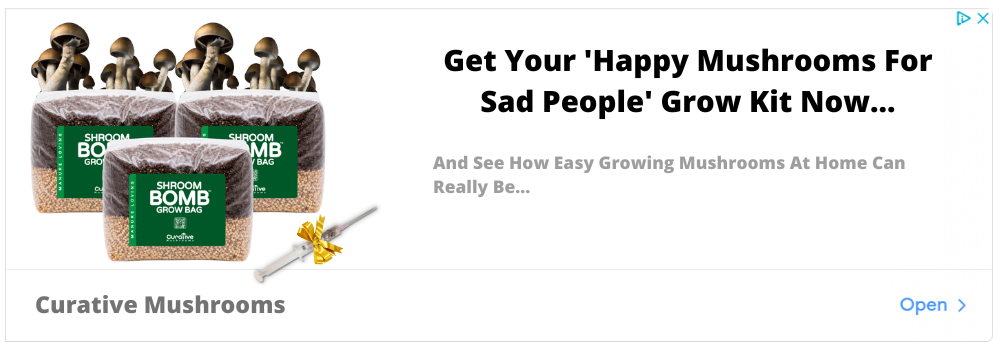
 4. Pink Oyster (Pleurotus Djamor)
4. Pink Oyster (Pleurotus Djamor) 5. Phoenix Oyster (Pleurotus Pulmonarius)
5. Phoenix Oyster (Pleurotus Pulmonarius) 6. King Oyster (Pleurotus eryngii)
6. King Oyster (Pleurotus eryngii) 7. Elm Oyster (Hypsizygus Ulmarius)
7. Elm Oyster (Hypsizygus Ulmarius) 1. Jack-O-Lantern (Omphalotus Olearius)
1. Jack-O-Lantern (Omphalotus Olearius) 2. Ivory Funnel Mushrooms (Clitocybe Dealbata)
2. Ivory Funnel Mushrooms (Clitocybe Dealbata) 3. Ghost Fungus (Omphalotus Nidiformis)
3. Ghost Fungus (Omphalotus Nidiformis)
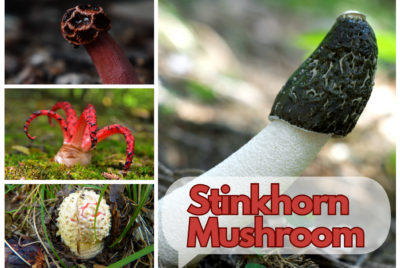
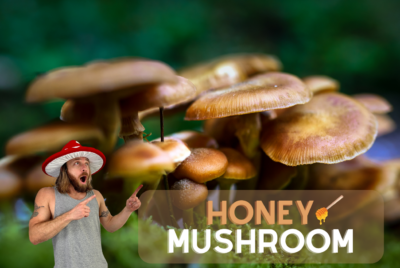
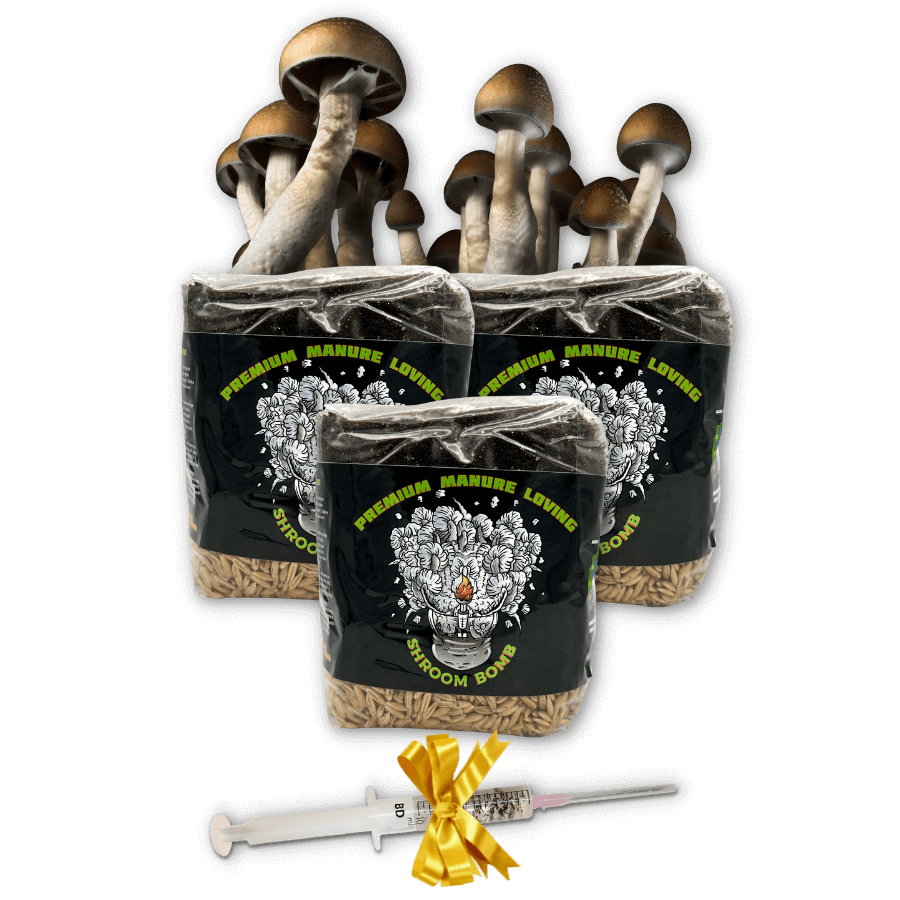

Greetings!
I just wanted to let you know how comprehensive and well put together your piece is. As a fellow mushroom enthusiast, I think your article is very rich in content as you include the common mistakes in identifying Oyster mushrooms and also their benefits. I am definitely sharing it to my blog and facebook.
Keep up the great work!
Thanks. I am glad you like it.
Thank you very much for this rich information. I am an agricultural extension worker and I want to confess, this has made me a better professional. I am now thinking of setting up a demonstration to help many of my fellow Ugandans. Looking forward to more interactions. I am already blessed by this.
Thanks Dickson! I’m glad you liked it.
After two days of nice rain, I returned to my favorite morel sites to see if there were any fresh blooms, and all I found of morels were past prime. But, what I discovered in the woods, instead, were abundant beautiful clusters of yellow oyster mushrooms. Although I did not know what they were, they were so fresh, clean, abundant, and lovely, I took several pounds home to research. Although I regularly harvest wild boletes, pheasant backs, puffballs, chicken-of-the-woods, and morels, I consider myself a neophyte who isn’t about to risk sickness in a quest for new mushroom tastes. Under risk of mistaking jack-o-lanterns for golden oysters, I was preparing to forgo the potential pleasure of the lovely yellow mushrooms in our woods when I found your page on oyster mushrooms. Your photos and analysis gave me confidence to proceed, and I can report great enjoyment of fried golden oyster caps both plain and in omelettes, golden oyster mushroom soup, and toasted golden oyster stems with toasted almonds as a TV-watching snack. Thanks for your help.
That is great news that you didn’t pass up on finding the golden oyster and I am glad this article was able to help you!
Hi, received oyster mushrooms, this a.m., thru a food pantry, How do I know if they are safe to eat? are they freezable? or should I saute them before I freeze?
Hell,
The good news about oyster mushrooms is they don’t have to many poisonous look-a-likes. You can check out this page for the different pictures.
They are safe to eat but it always recommended to cook mushrooms before you eat them. They are are freezable and it is recommended to saute them before you freeze them to keep the best texture and taste.
Please let me know if you have any other questions.
Thanks.
Found a wild oyster shelf (several clusters on a fallen log) today and your write up helped me feel uber safe in my identifcation. Groups of mushrooms growing together; gills running all the way down; no stem; etc.! Thanks, about to sautee with dinner. Think I got a pearl. From northern Vermont!
Awesome job Mikayla! That is a beauty.
How did it taste?
Thank you for posting, great article. I am an amateur mushroom hunter, my new pandemic hobby I guess. I have a large dead maple tree on my property. 1/2 of it is still standing verticaly. Top has fallen off. I can’t tell for sure, but it looks like there is a massive crop of lovely white oyster mushrooms growing at about the 20 ft level of the vertical trunk. Is it possible to get oyster mushrooms that high up on a dead tree? Not sure how the spores ever made it up there. Bird poop? dunno. I haven’t bothered to haul out a big ladder to get at these yet. As I’m kind of having doubts about them. But I have to say, they look like oysters. Any ideas?
Thanks in advance!
Hi Rocke,
It is possible to find the mushroom high up the the tree. If the tree has been dying for a while the mushroom mycelum is all over the inside of the tree.
Please post a picture of it here so we can help you positively identify it.
Thanks.
Best article that I ever came across. Very informative. Gives me much more confidence when looking for oyster mushrooms. Thank you so much for sharing.
Thank s Tony! I am glad you found it useful.
Hey! Great article! I’ve just started to grow oysters with hopes of starting up a small farm and going to the farmers market!
This article was great! I already have a bunch of these varieties as spores sitting in my fridge waiting to get inoculated!
I love getting your emails and podcasts! So informative!
Here is a pic of a small grow I did of some white oysters – they came out great! Woodsy and smokey flavor!
Can you do an article on how to do an oyster spore print?
Hi Monika,
I am glad you enjoy our articles. I will add it to my list to do an article on creating an oyster spore syringe for you.
Thanks.
Regards!
Hey Buddy, I’m thinking these are elm Oyster Mushrooms, any help identifying them would be greatly appreciated!!!
Hi Chris,
This one appears to be a normal oyster mushroom.
Regards!
Greetings! Trying to identify these as wild golden oyster!? Hardly any stems, all gills, I’m in the mid hudson Valley NY. Thanks for this very informative information!
Did you find them growing on a tree or the ground?
Hello!
Thank you very much for the useful info.
All the best!
Thanks Edy!
Great article. Just found my first oyster which I am comfortable eating thanks to you!
For the sake of everything that’s dear to you don’t eat mushrooms you are not sure about. Most of what is listed above is Not likely to be found in a forest. Oyster look alikes include much more species than listed above. You need its Latin name to look it up, not a description like “something oyster”. Trust mycologists, not amateurs.
Hello Oliver,
I appreciate you sharing your knowledge of mushrooms, very informative, thank-you. I found 1 mushroom that looks like an oyster type but not sure. Would you happen to know? I’ve attached the pics. It was found on a dead oak in central ky. The bottom has gills going to the stem
Thank-you for your help,
Art
Please send a picture of the underside.
Hello!
I think we found our first oysters. Phoenix oysters maybe? I would love a confirmation if possible. Thanks!
Please send a picture of the underside as well and general location of the world you are in.
I am located in the United States in the state of Florida.
Here is another picture of the underside.
Thanks!
Appears to be Pleurotus ostreatus.
Great thanks for the help. I sautéed some in butter and and they were pretty good. Thanks again for the confirmation.
[…] Known scientifically as PleurotusOstreatus, oyster mushrooms are common edible mushrooms. They have a mild and woody taste, much like seafood. Although there are 7 types of oyster mushrooms in total, the best tasting oyster mushroom is the Pearl Oyster that is popular all across North America. (source) […]
[…] Oyster mushrooms – Oyster mushrooms are a shelf mushroom that grow on decaying timber. They are quite common and have a very delicate oyster-like flavor. In the Pacific NorthWet it was a regular Autumnal activity to harvest an abundance of these. One of my favorite ways to cook these is breaded and fried. There are also kits that you can purchase, as Oyster mushrooms are very easy to cultivate at home in straw bale medium that has been inoculated with the spores. […]
[…] Oyster mushrooms – are a shelf mushroom that grow on decaying timber. They are quite common and have a very delicate oyster-like flavor. In the Pacific NorthWet it was a regular Autumnal activity to harvest an abundance of these. One of my favorite ways to cook them is breaded and fried. There are also kits that you can purchase, as Oyster mushrooms are very easy to cultivate at home in straw bale medium that has been inoculated with the spores. […]
Hey Oliver, I’m pretty sure these are oyster mushrooms off dead elm logs. Can you please verify for me?
Hi! I found this in my yard in charleston, sc. I thought at first it was a magnolia flower. I have an app called Seek that id’s plants and animals. The app said this was a shoehorn oyster. What are your thoughts? The gills extend to the short stem but look more like cells than linear gills.
This mushroom was found at ground level in the front yard near where a tree used to stand. Possibly growing from a dead branch buried in the soil surface? No shade in this area. It’s mid October and location is in middle Tennessee. Sorry, I can only figure out how to post one picture at a time.
Also, Great article, however, at the bottom, it appears that you have a picture of an edible pearl oyster under the heading of poisonous look-alike mushrooms. The picture looks just like the one at the top of the article describing the pearl oyster.
Hi, I wanted to get your thoughts on these. We’ve had a slight warm spell recently, and I found them growing on some pieces of recently cut-up Hackberry tree stumps. Will follow with a picture of the under side.
Here is the underside.
I was very unsure about the id process. Considering its a great mushroom versus getting poisoned i felt there needs to be some clarification for newbies like me about the stem. I thought i read that true oyster have no stem but then that a sure id is if the gills go all the way down to the basebof the stem?
Most oyster mushrooms don’t have a stem. If they do, the bundle of mushrooms is attached to only one central stem which is usually short. If you’re not sure about the edibility of the mushroom, it’s best to NOT consume it.
Is this a type of oyster mushroom and is it edible? If it is edible, is there a way to harvest them so that it will continue growing? I’m in Central America. We had a few rainy days and found these mushrooms on a piece of a mango tree log.
That looks like Lentinus squarrosulus, an edible mushroom commonly found in Asian countries, usually growing on dead mango trees. Does it look like this in the video? https://www.youtube.com/watch?v=TlPTYu6wDMo Disclaimer: We do not advise consuming any wild mushroom
[…] Besides, hunters often mistake ghost fungi with the edible Oyster mushrooms. Read 7 Types of Oyster Mushrooms & 3 Poisonous Look Alikes […]
Hello,
These started growing on a rotten Marula tree which was riddled with termites. They look like Oyster mushrooms, just want to be sure if they are the real deal.
Hi, Ngilozi. Based on your description and the habitat you mentioned, it is highly likely that the mushrooms you found on the rotten Marula tree are indeed Oyster mushrooms. However, it’s important to note that a visual confirmation by an experienced mycologist is always recommended for precise identification.
Looks like an Oyster mushroom?
It’s underneath;
Hello, in the “False Oyster Mushroom Identification” section you say “There are ones you should be wary of like the Elm Oyster, Jack-O-Lantern Mushroom, and Ivory Funnel that can cause health issues when eaten.” Elm oysters (Hypsizygus ulmarius) are a perfectly safe edible mushroom, you include them yourself in your “Top 7 Types of Oyster Mushroom.” Also, oyster mushrooms DO have stems, however stubby they may be. There can’t be gills running down the stem if there’s no stem! A gilled mushroom with TRULY no stem would be Lentinellus ursinus.
Thank you for bringing this to our attention. Elm oyster mushrooms are safe to eat, and the information about them being in the “False Oyster Mushroom Identification” section was inaccurate. Oyster mushrooms do have a stem-like structure, even if they are short, and the exact term for this is “stipe.” We apologize for the confusion and will make the necessary corrections.
Your little Pinterest Pin shows two edible oyster species under “Poisonous Look-Alikes”–Pleurotus ostreatus and Pleurotus citrinopileatus.
Hi, Lemony. Apologies for the confusion caused by the Pinterest Pin. Pleurotus ostreatus and Pleurotus citrinopileatus are indeed edible oyster mushroom species, not poisonous look-alikes. It seems there was a mislabeling or misinformation in that Pin. Thanks for bringing it to our attention.
Great article. I found these on a fallen log in the forest this morning. Thinking it is an oyster but would love to get your opinion. I’m in Southwest WA. Thanks
Hi, Denley. Jessie here from Support Team.
Thank you for your comment! I’m glad you enjoyed the article. Based on your description, it’s exciting that you found mushrooms on a fallen log. While it’s possible that they could be oyster mushrooms, it’s important to note that I am not an expert in mushroom identification. Identifying mushrooms accurately can be challenging and should be done with caution.
In Southwest WA, there are various mushrooms that could resemble oyster mushrooms, including chanterelles and the poisonous jack o’ lantern mushroom. To get a reliable identification, I recommend consulting with a local mycologist or using reputable field guides specific to your region. They have the expertise to provide accurate guidance and ensure your safety.
Remember, misidentifying mushrooms can have serious consequences, so it’s crucial to be absolutely certain of their identity before considering consumption. Always prioritize safety and never consume any mushroom unless you are confident about its edibility.
Enjoy your mushroom exploration, and I hope you have a great time discovering the diverse fungi in your area! 🙂